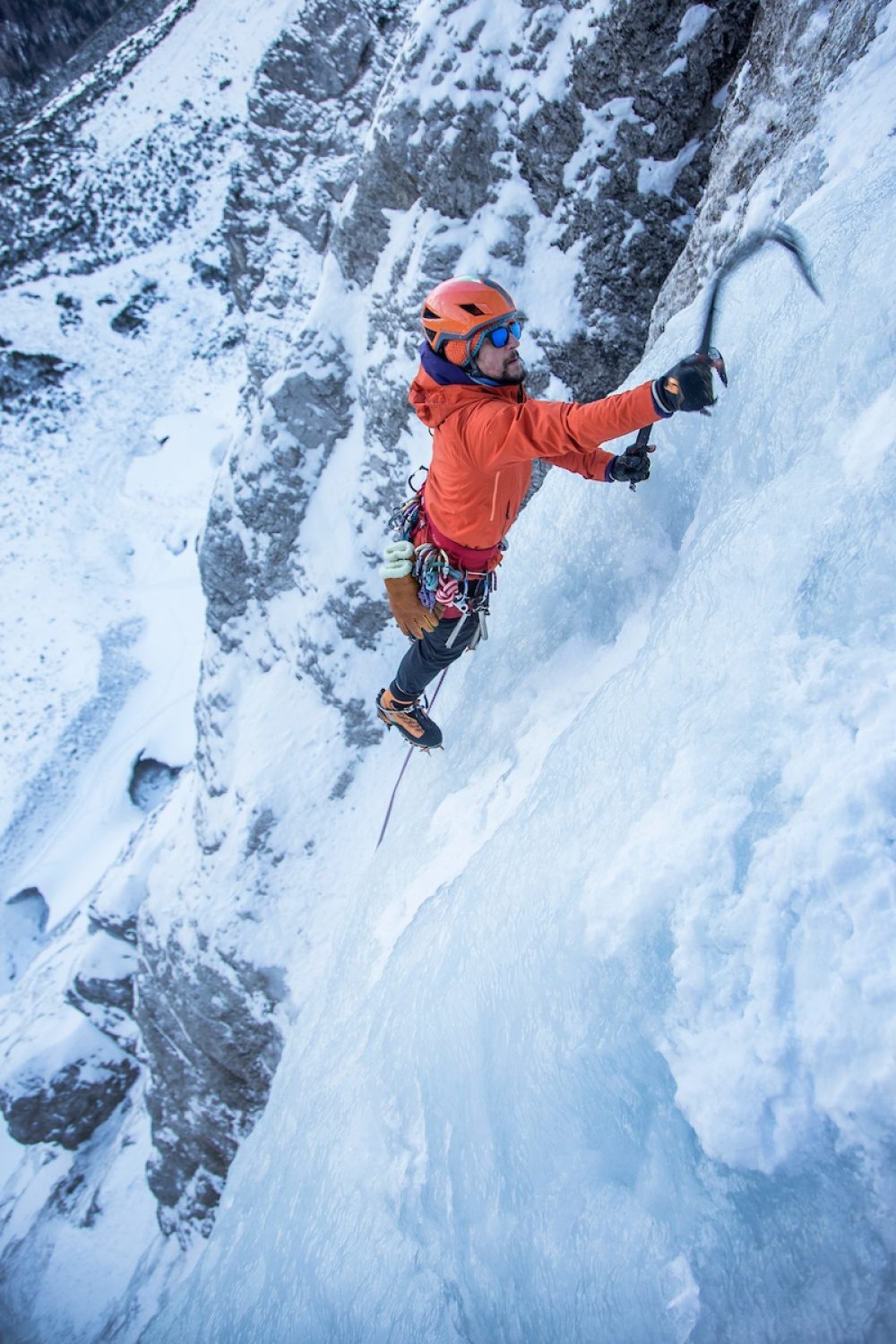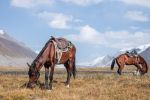Winter Climbing Grades
Adrian Nelhams sheds some light on the Scottish winter, mixed and water ice grading systems.

SMC (Scottish Mountaineering Club)
Winter climbs have been graded using the two-tier system, in which the Roman numeral indicates the overall difficulty of the climb and the accompanying Arabic numeral represents the technical difficulty of the hardest sections of climbing. Since its introduction in 1991, this system has gained widespread acceptance amongst the majority of the winter climbers in Scotland, and almost all new climbs reported are now given two-tier grades. The aim of the two-tier system is to grade modern mixed routes to indicate their high levels of technical difficulty, while taking into consideration the frequently greater seriousness of the ‘older-style’ ice routes.
Nearly all grades up to and including grade IV retain their original overall grades.
Climbs of grade IV and above (and a few of grade III) have two grades, an overall grade in Roman numerals and a technical grade in Arabic numerals
The overall grade takes into account all factors affecting the difficulty of reaching the top of a climb, including its technical difficulty, seriousness and how sustained the climbing is.
The technical grade reflects the actual difficulty of the hardest section(s) of climbing, without reference to seriousness, it’s not intended to be used as a technical pitch by pitch grading system. On a climb of overall grade V, a technical grade of 6 generally indicates more technical mixed climbing, and technical grades of 7 and 8 indicate much more intricate and harder snowed-up rock moves.
The technical grade normally varies by not more than two below or two above the overall grade. Thus, V5 can be taken as an average grade V route of the old system. A higher technical grade than the overall grade would indicate greater technical difficulty, off-set by better protection. A lower technical grade would indicate a greater level of seriousness.. The system has some parallels with the Summer UK Rock Grading System

As with Alpine climbing the conditions on any given day could greatly change the grade of a route with there being less ice formed that year or maybe that it’s completely ‘rimmed’ up and it’s difficult to find any protection what’s so ever
Grade I - Snow gullies and easy ridges.
Grade II - Steep snow where two ice tools may be required but technical difficulties are short. Possible difficult cornice exit.
Grade III - Mixed ascents of moderate rock routes; icy gullies; sustained buttresses.
Grade IV - Steep ice with short vertical steps or long pitches up to 70º, or mixed routes requiring advanced techniques.
Grade V - Sustained ice to 80º or mixed climbs with linked hard moves. Climbs are difficult, sustained, and/or serious.
Grade VI - Vertical ice and highly technical mixed routes. Grade VI and above routes have exceptional overall difficulties.
Grade VII - Multi-pitch routes with long sections of vertical or thin ice, or mixed routes with lots of highly technical climbing.
VIII-IX - The hardest routes in Scotland. Canadian Winter
Scottish Technical Grade -
Grade IV and above get an additional grade for pitches within the climb. For example, a grade V climb might look like V 4, V 5, V 6 or even V 7. The average within them is the V 5 which could be seen as a benchmark grade V. The V 6 and V 7 will be hard, and V8 very hard and intricate climbing, but should have good protection. If the number is lower though, such as V 4 then the route may not be as technical as it is serious.

Mixed Grades -
These routes require considerable dry tooling (modern ice tools used on bare rock) and are climbed in crampons; actual ice is optional, but some ice is usually involved.
These routes are not to be ‘mixed up!!’ with Scottish winter mixed climbing are they are two totally different things.
In the UK and Ireland we have limited rock-climbing resources, unlike maybe the Canadian Rockies or the rest of Europe and so ‘dry tooling’ or M – mixed climbing in many part’s is rightly frowned upon as we don’t want to ruin the rock for summer rock climbing.
Traditional mixed climbing here in the UK and Ireland is a balance between snowed up rock, ice, and frozen turf, all combined to make some very unique and adventurous climbing.
To help with what are UK Mixed climbing conditions and to help explain things a little further check out the Lake District Winter Conditions Guide or the North Wales White Guide
M1-3 - Easy. Low angle; usually no tools.
M4 - Slabby to vertical with some technical dry tooling.
M5 - Some sustained vertical dry tooling.
M6 - Vertical to overhanging with difficult dry tooling.
M7 - Overhanging; powerful and technical dry tooling; less than 10m of hard climbing.
M8 - Some nearly horizontal overhangs requiring very powerful and technical dry tooling; bouldery or longer cruxes than M7.
M9 - Either continuously vertical or slightly overhanging with marginal or technical holds, or a juggy roof of 2 to 3 body lengths.
M10 - At least 10 meters of horizontal rock or 30 meters of overhanging dry tooling with powerful moves and no rests.
M11 - A rope length of overhanging gymnastic climbing, or up to 15 meters of roof.
M12 - M11 with bouldery, dynamic moves and tenuous technical holds.

Water Ice Grades -
Ice climbing ratings are highly variable by region and are still evolving. The following descriptions approximate the average systems.
WI1 - Low angle ice; no tools required.
WI2 - Consistent 60º ice with possible bulges; good protection.
WI3 - Sustained 70º with possible long bulges of 80º-90º, reasonable rests and good stances for placing screws.
WI4/4+ - Continuous 80º ice fairly long sections of 90º ice broken up by occasional rests.
WI5/5+ - Long and strenuous, with a rope length of 85º-90º ice offering few good rests, or a shorter pitch of thin or bad ice with protection that’s difficult to place.
WI6/6+ - A full rope length of near-90º ice with no rests, or a shorter pitch even more tenuous than WI 5. Highly technical.
WI7+ - As above, but on thin poorly bonded ice or long, overhanging poorly adhered columns. Protection is impossible or very difficult to place and of dubious quality.
WI8 - Under discussion.
Snow:
Snow is often described by its steepest angle (ex.: 70º) or by a range approximating its steepest angle (ex - 70º-80º).
Adrian Nelhams
Related News Articles

ISM Virgin Peaks Expedition 2024 - Tien Shan Kyrgyzstan
ISM trip report of our trip into a very remote part of the Tien Shan Mountains, Kyrgyzstan
Read Article
Getting Into & Developing Your Climbing
Indoor bouldering is a great place to start if you want to try climbing for the first time. You can…
Read Article
ISM Virgin Peaks Expedition 2023 – Tien Shan Kyrgyzstan
ISM trip report of our trip into a very remote part of the Tien Shan Mountains, Kyrgyzstan.
Read Article
Kyrgyzstan Faces 2022
This year ISM celebrated 25yrs of expedition climbing in Kyrgyzstan, with a fantastic trip to the Fergana Range in the…
Read Article



